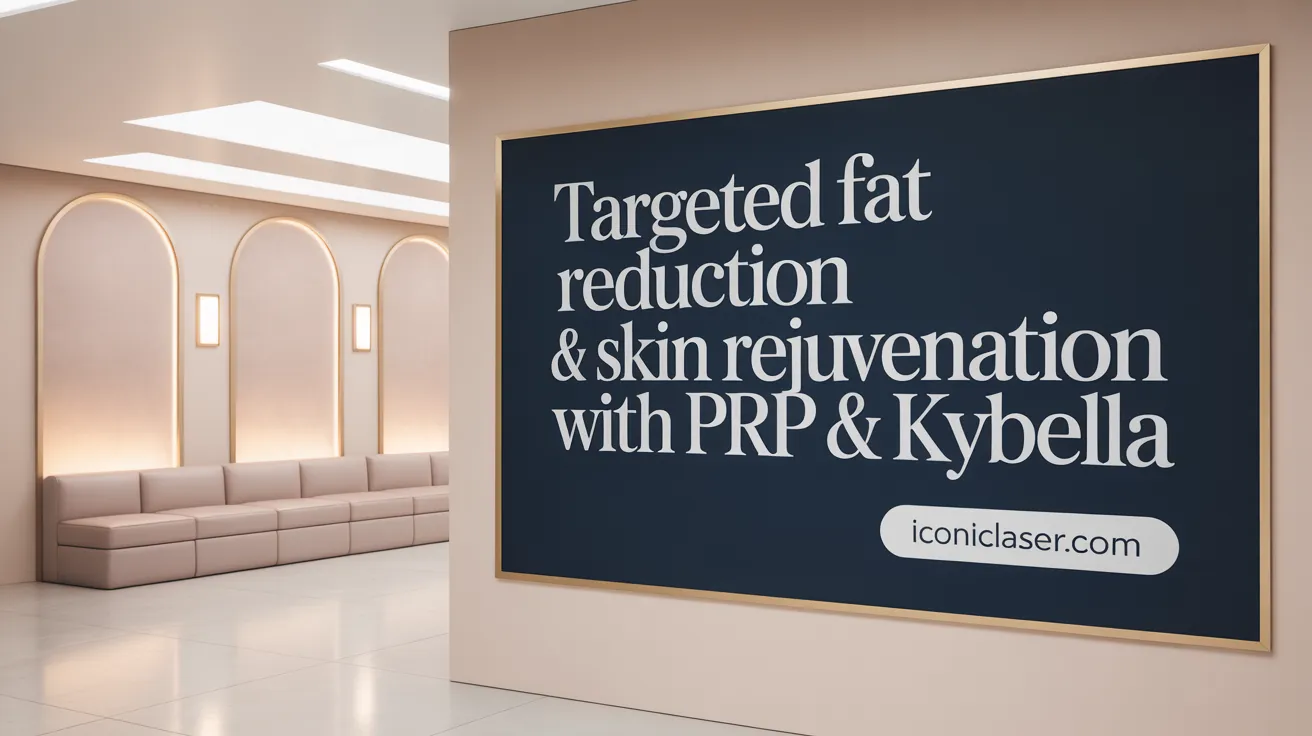An Overview of Injectable Treatments in Modern Aesthetics
Injectable treatments have transformed the aesthetic industry by offering minimally invasive solutions to combat signs of aging and enhance facial features. From muscle relaxants to volumizing fillers, these procedures cater to diverse cosmetic needs with quick turnaround and minimal downtime. This article dives deep into the types, uses, benefits, risks, and outcomes of various injectable treatments, furnishing readers with a well-rounded understanding of these popular dermatological interventions.
Types of Injectable Treatments and Their Mechanisms

What are the main types of injectable treatments used in cosmetic dermatology?
Injectable treatments in cosmetic dermatology primarily fall into several distinct categories based on their mechanisms and purposes.
Different categories of injectables
- Neuromodulators: These include botulinum toxin products such as Botox, Dysport, Jeuveau, and Xeomin. They work by temporarily relaxing facial muscles, which smooths dynamic wrinkles caused by muscle contractions.
- Dermal Fillers: Commonly hyaluronic acid-based fillers like Restylane and Juvéderm provide volume restoration and wrinkle smoothing. Other types include calcium hydroxylapatite (Radiesse), poly-L-lactic acid (Sculptra), and polymethylmethacrylate (Bellafill, which stimulate collagen production or offer longer-lasting tissue support.
- Fat-Based Injections: Autologous fat grafting involves harvesting a patient's own fat via liposuction and injecting it into facial areas to restore volume with longer-lasting results.
- Enzyme Injectables: Kybella uses deoxycholic acid to dissolve submental fat (commonly known as double chin), offering a non-surgical fat reduction option.
Botulinum toxin-based neuromodulators
Botulinum toxin injections target overactive muscles by blocking nerve signals, leading to relaxation. They are mostly used for dynamic wrinkles in the forehead, around the eyes (crow’s feet), and frown lines. Effects generally last 3 to 6 months, requiring repeat treatments for maintenance.
Dermal fillers and bio-stimulatory agents
Dermal fillers restore lost volume and smooth out static wrinkles or folds. Hyaluronic acid fillers are prevalent due to their natural compatibility and reversible nature, lasting about 6 to 18 months depending on the product. Bio-stimulatory agents like poly-L-lactic acid stimulate the body's collagen production gradually, providing results that can last up to two years. Calcium hydroxylapatite fillers similarly promote collagen while providing immediate volumization.
Fat-based and enzyme injectables
Autologous fat injections capitalize on the patient’s own tissue for facial volume enhancement, often lasting many years though requiring surgical expertise and longer recovery. Kybella (deoxycholic acid) enzymatically destroys fat cells beneath the chin to reduce submental fullness permanently after a series of treatments.
Emerging technologies in injectables
Recent advances include platelet-rich plasma (PRP) therapy, which uses the patient’s own plasma enriched with growth factors to stimulate tissue regeneration and collagen production for skin and hair rejuvenation. Absorbable PDO threads are also gaining popularity; they lift and tighten sagging skin while encouraging collagen formation, with effects lasting six to nine months.
Together, these injectable treatments offer tailored, minimally invasive options to combat signs of aging, improve facial contours, and enhance skin quality with little downtime.
Neuromodulators: Botulinum Toxin Treatments
How do botulinum toxin injectables work and what are their common uses?
Botulinum toxin injectables, including well-known brands such as Botox, Dysport, Jeuveau, Xeomin, and Daxxify, work by blocking nerve signals that stimulate muscle contractions. When injected into specific facial muscles, they cause a temporary relaxation of those muscles. This mechanism helps to reduce the appearance of dynamic wrinkles—wrinkles that form due to repeated muscle movements—such as forehead lines, frown lines between the eyebrows (glabella), crow's feet around the eyes, and lines near the mouth (Botulinum toxin uses).
What areas are treated and how long do effects last?
These neuromodulators are commonly used in cosmetic treatments targeting areas like:
- Forehead
- Glabella (frown lines)
- Crow's feet (around the eyes)
- Around the mouth
The effects generally begin to show between 3 to 7 days after treatment, with results lasting typically between 3 to 6 months. Certain formulations, such as Daxxify, may extend the duration up to 9 months (Botulinum toxin uses and effects).
What are the medical and cosmetic applications?
Besides smoothing wrinkles and fine lines for aesthetic enhancement, botulinum toxin injectables are FDA-approved for several medical conditions, including:
- Chronic migraines
- Cervical dystonia (neck muscle spasms)
- Excessive sweating (hyperhidrosis)
- Muscle spasms or tics
This dual use demonstrates the versatility and broad therapeutic value of botulinum toxins (Botox medical uses).
What are the common side effects and precautions?
Side effects are generally mild and transient, with the most common including:
- Bruising at the injection site
- Temporary drooping of eyelids or eyebrows
- Headache
- Muscle weakness near the treated area
These effects are rare when treatments are performed by experienced and licensed healthcare providers. Patients should disclose their medical history and medications to minimize risks. Additionally, post-treatment precautions include avoiding rubbing the area and refraining from lying down immediately after injections to prevent migration of the toxin (Patient precautions for cosmetic injections).
Botulinum toxin treatments provide an effective, minimally invasive option for both cosmetic rejuvenation and specific medical conditions, delivering natural-looking results with minimal downtime (Benefits of Cosmetic Injectables).
Dermal Fillers and Collagen Stimulators

What are dermal fillers and how do different types function?
Dermal fillers are injectable gels that restore lost facial volume, smooth wrinkles, and improve contours. They are popular for non-surgical facial rejuvenation, addressing areas such as cheeks, lips, nasolabial folds, and jawline.
Hyaluronic acid fillers
Hyaluronic acid (HA) fillers, including well-known brands like Restylane Dermal Filler and Juvéderm, offer immediate volumizing effects. HA is a natural substance that attracts and retains moisture, which helps hydrate the skin and stimulate collagen production. These fillers typically last between 6 to 18 months, depending on the specific product and treatment area.
Calcium hydroxylapatite fillers
Calcium hydroxylapatite fillers, such as Radiesse collagen stimulation, are thicker than HA fillers and last about a year. Besides providing volume, they encourage the body’s natural collagen production, helping to improve skin firmness and texture gradually.
Poly-L-lactic acid and collagen stimulation
Poly-L-lactic acid fillers like Sculptra collagen stimulator do not provide immediate volume but induce collagen synthesis over several months. This results in a gradual, natural-looking enhancement that can last up to two years, making them suitable for deeper wrinkles and overall skin rejuvenation.
Polymethylmethacrylate fillers
PMMA fillers, including Bellafill, contain tiny microspheres suspended in collagen. These provide semi-permanent structural support beneath the skin for medium-to-deep wrinkles and scars, with effects that can last for several years.
Fat grafting techniques
Autologous fat injections involve harvesting a patient’s own fat via liposuction and reinjecting it into facial areas for volume restoration. Results can be long-lasting, but the procedure requires surgical expertise and has a longer recovery time compared to synthetic fillers.
Longevity and treatment areas
The choice of filler depends on the target area and desired duration. HA fillers suit delicate zones like lips and under eyes, CaHA and PLLA are favored for deeper lines and volume loss, and PMMA is used for longer-lasting correction. Fat grafting provides durable volume especially in larger areas but involves more complex treatment.
Specialized Injectable Treatments: Fat Reduction and PRP

What specialized injectables are used for reducing fat and skin rejuvenation?
Specialized injectable treatments like Kybella Double Chin Treatment and Platelet-rich plasma uses offer targeted approaches for fat reduction and skin rejuvenation.
Kybella for submental fat reduction
Kybella is an FDA-approved injectable containing deoxycholic acid used primarily to reduce submental fat, commonly known as a double chin. This treatment helps break down fat cells, which the body then naturally eliminates, resulting in improved facial contour.
Mechanism and treatment schedule of Kybella
Kybella Fat Reduction injections disrupt fat cell membranes, leading to their destruction. Treatment typically involves multiple sessions — about 2 to 6 sessions — spaced several weeks apart to ensure optimal results, which can be permanent if a stable weight is maintained.
Platelet-Rich Plasma (PRP) therapy
Platelet-Rich Plasma therapy utilizes the patient's own blood plasma enriched with platelets, which contain growth factors that stimulate collagen production and tissue regeneration. It is a biologic treatment offering a natural method to rejuvenate skin and promote healing.
Application of PRP in aesthetics
PRP is used for facial rejuvenation, improving skin texture, reducing scars, and supporting hair restoration. Because it is derived from the patient's own blood, PRP is biocompatible and minimizes the risk of allergic reactions.
Safety and efficacy of enzyme and biologic injectables
Both Kybella and PRP therapies are considered safe when administered by trained medical professionals. Side effects are minimal and typically localized, such as mild swelling or bruising, making these treatments popular options for natural-looking enhancement with low downtime.
Procedure, Consultation, and Safety Considerations
What does the process and safety protocol for injectable treatments involve?
Before any injectable treatment, a comprehensive consultation is essential. During this appointment, the healthcare provider conducts a detailed evaluation of the patient's face, discusses aesthetic goals, and reviews medical history. This helps identify any contraindications such as allergies, autoimmune diseases, or prior reactions to dermal fillers or neurotoxins.
Injection procedures take place in a clinical setting adhering to strict hygiene protocols. The skin is thoroughly disinfected before injecting the chosen substance—using a fine needle or cannula—to ensure precise placement and minimize tissue trauma. To reduce discomfort, local anesthesia or numbing creams may be applied beforehand as part of post-procedure care for injectables.
Common side effects experienced after treatment include bruising, swelling, tenderness, redness, and minor discomfort. These effects are typically mild and resolve naturally within a few days. Management involves cold compresses, avoiding strenuous activity shortly after treatment, and gentle skin care. For a detailed overview, see side effects of dermal fillers and post-treatment care for injectables.
Though rare, serious complications can occur. These include vascular occlusion, which might cause tissue necrosis or even vision loss if untreated promptly. Other potential risks involve allergic reactions, infections, and formation of nodules or lumps under the skin. Prevention centers around thorough anatomical knowledge, careful injection technique, use of FDA-approved products, and patient selection.
To ensure both safety and satisfactory cosmetic results, injectable treatments should only be performed by licensed and experienced healthcare professionals trained in facial anatomy and injection methods. This expertise allows for tailored treatment plans minimizing risks and optimizing natural-looking outcomes.
Outcomes, Benefits, and Longevity of Injectable Treatments

What outcomes can patients expect and how long do results typically last?
Injectable treatments provide noticeable enhancements such as smoother skin, wrinkle reduction, volume restoration, and improved facial contours. Many patients report high satisfaction, particularly with lip augmentation and restoring youthful fullness to cheeks. Neuromodulators like Botox produce visible effects within 3 to 7 days, lasting about 3 to 6 months. Hyaluronic acid fillers, including Restylane Dermal Filler and Juvéderm, typically last from 6 to 18 months, offering immediate results. Collagen stimulators like Sculptra Collagen Stimulator work more gradually over weeks and can sustain results for up to two years.
Immediate vs gradual effects
While fillers often deliver instant improvement, collagen stimulators provide slow, progressive renewal by stimulating the body's own collagen. Botox and similar neurotoxins reduce muscle activity quickly within days.
Downtime and recovery
Treatments involve minimal discomfort and side effects such as mild swelling or bruising that resolve in days. Most patients resume normal activities immediately, with little to no downtime required. For more details, see post-treatment care for injectables.
Longevity depending on injectable type
- Neuromodulators (Botox, Dysport): 3 to 6 months
- Hyaluronic acid fillers (Restylane Dermal Filler, Juvéderm): 6 to 18 months
- Collagen stimulators (Sculptra Collagen Stimulator): Up to 2 years
- Other fillers like Radiesse collagen-stimulating filler may last about a year
Advantages over surgical procedures
Injectables are less invasive, safer, and more affordable than surgical alternatives. They require no significant recovery time and can be tailored to individual needs, making them a widely preferred option for non-surgical facial rejuvenation.
Risks, Side Effects, and Post-Treatment Care

What are the common side effects of injectables?
Most patients experience temporary side effects such as bruising, swelling, redness, tenderness, itching, and mild discomfort after injectable treatments. These effects usually resolve within a few days without intervention.
What potential serious adverse effects should patients be aware of?
Though rare, serious complications can occur, including vascular occlusion which may lead to skin necrosis, infections, allergic reactions, asymmetry, and lumps. In very exceptional cases, unintended injection into blood vessels can cause vision problems or stroke. For detailed information, see adverse effects of dermal fillers and serious dermal filler risks.
How should patients care for their skin after treatment?
Post-treatment care is essential to ensure the best results and minimize complications. Patients are advised not to touch, massage, or apply pressure to the treated areas. Avoiding strenuous exercise, extreme heat or cold for 24 to 48 hours helps reduce swelling or bruising. Applying sunscreen protects the skin during the healing period. More guidance on post-procedure care for injectables is available.
When to seek medical attention?
If patients notice persistent or worsening pain, excessive swelling, discoloration beyond normal bruising, signs of infection such as redness and warmth, or allergic reactions like difficulty breathing, they should seek immediate medical care. Information about adverse reactions to cosmetic injectables and emergency responses can be helpful.
Why is professional administration important?
Having treatments delivered by licensed, experienced healthcare professionals reduces risks by ensuring proper injection techniques, thorough patient evaluation, and rapid response to any adverse events. Ongoing monitoring and proper patient education form a vital part of safe cosmetic injectable treatments.
The Future and Safety of Injectable Treatments
Injectable treatments continue to evolve offering safe, effective, and customizable solutions to a broad range of cosmetic concerns. With advancements in materials and techniques, combined with rigorous clinical consultation and professional administration, these minimally invasive procedures provide natural-looking results with minimal downtime. Patients benefit from improved confidence and rejuvenated appearance while avoiding the risks and recovery associated with surgery. Staying informed about the types of injectables, their uses, expected outcomes, and potential risks plays a vital role in making safe choices and achieving satisfying results. As the field progresses, ongoing education and adherence to safety protocols remain paramount for both providers and patients alike.
